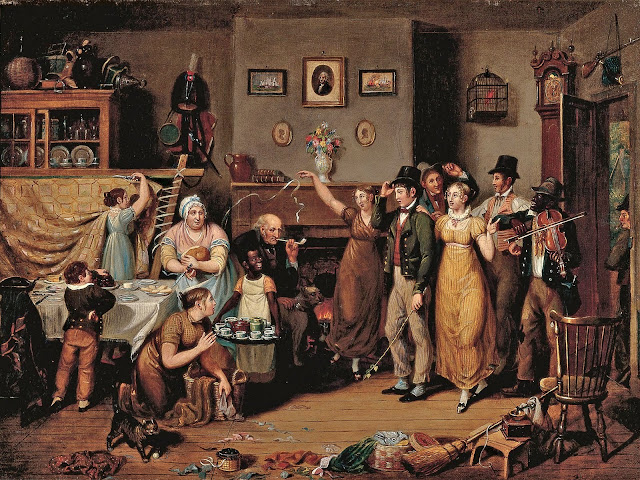
Lou Williams was born in southern Maryland. She and her family were slaves of Abram and Kitty Williams, and Lou served as nursemaid to her master's children from the age of eight until after the Civil War. She then went to Louisiana where she worked as a cook for several years before moving to San Angelo, Texas:
"We allus gits Saturday evenin' off to wash our clothes and sometime we has dances Saturday night...We has corn shuckin's and big suppers and on Christmas day massa buys us de present, most times shoes, 'cause we didn't have any shoes."
Photos & quotes from The Slave Narratives, a collection of over 20,000 pages of typewritten interviews with more than 3,500 former slaves, collected over a 10-year period. In 1929, both Fisk University in Tennessee & Southern University in Louisiana began to document the life stories of former American slaves. Kentucky State College continued the work in 1934. In the midst of the Depression between 1936-1939, these narratives continued to be collected as part of the Federal Writers' Project of the Works Progress Administration. They were assembled & microfilmed in 1941, as the 17-volume Slave Narratives: A Folk History of Slavery in the United States from Interviews with Former Slaves. The collection includes photos of the interviewees taken in the 1930s as well as their full interviews. Those whose voices are included in the collection ranged in age from 1 to 50 at the time of emancipation in 1865; more than 2/3 were over 80 when they were interviewed.
The obvious problem is the language as reported by the interviewers. The Library of Congress explains on their website, "The narratives usually involve some attempt by the interviewers to reproduce in writing the spoken language of those interviewed...The interviewers were writers, not professionals trained in the phonetic transcription of speech...by the 1930s, when the interviews took place, white representations of black speech already had an ugly history of entrenched stereotype dating back at least to the early nineteenth century." What most white interviewers assumed to be "the usual" patterns of their informants' speech was unavoidably influenced by the 1930s preconceptions & stereotypes of the interviewers themselves. "The result, as the historian Lawrence W. Levine has written, "is a mélange of accuracy & fantasy, of sensitivity & stereotype, of empathy & racism" that may sometimes be offensive to today's readers. Yet whatever else they may be, the representations of speech in the narratives are a pervasive & forceful reminder that these documents are not only a record of a time that was already history when they were created: they are themselves irreducibly historical, the products of a particular time & particular places..."
.











%2Bknown%2Bimage%2Bof%2Ba%2BChristmas%2Btree%2Bin%2Bthe%2BUnited%2BStates.%2B%2Bkimmel.jpg)





























+Board+and+Batten+Northern+South+Carolina+Cabin+1886.jpg)
+Cabin+in+the+South.jpg)
+Cabin+Scene+2.jpg)
+Cabin+Scene+13.jpg)
+Cabin+Scene.jpg)
+Cabin.jpg)
+Log+Cabin+with+Stretched+Hide+on+Wall.jpg)
+Louisiana+Cabin+Scene+with+Stretched+Hide+on+Weatherboard+and+Stock+Chimney+Covered+with+Clay+1878.jpg)
+Negro+Cabin+by+a+Palm+Tree.jpg)
+Cabin+in+the+South.jpg)
+Negro+Cabin+with+Palm+Tree.jpg)
+Negro+Cabiin+with+Two-Pole+Chimney.jpg)
